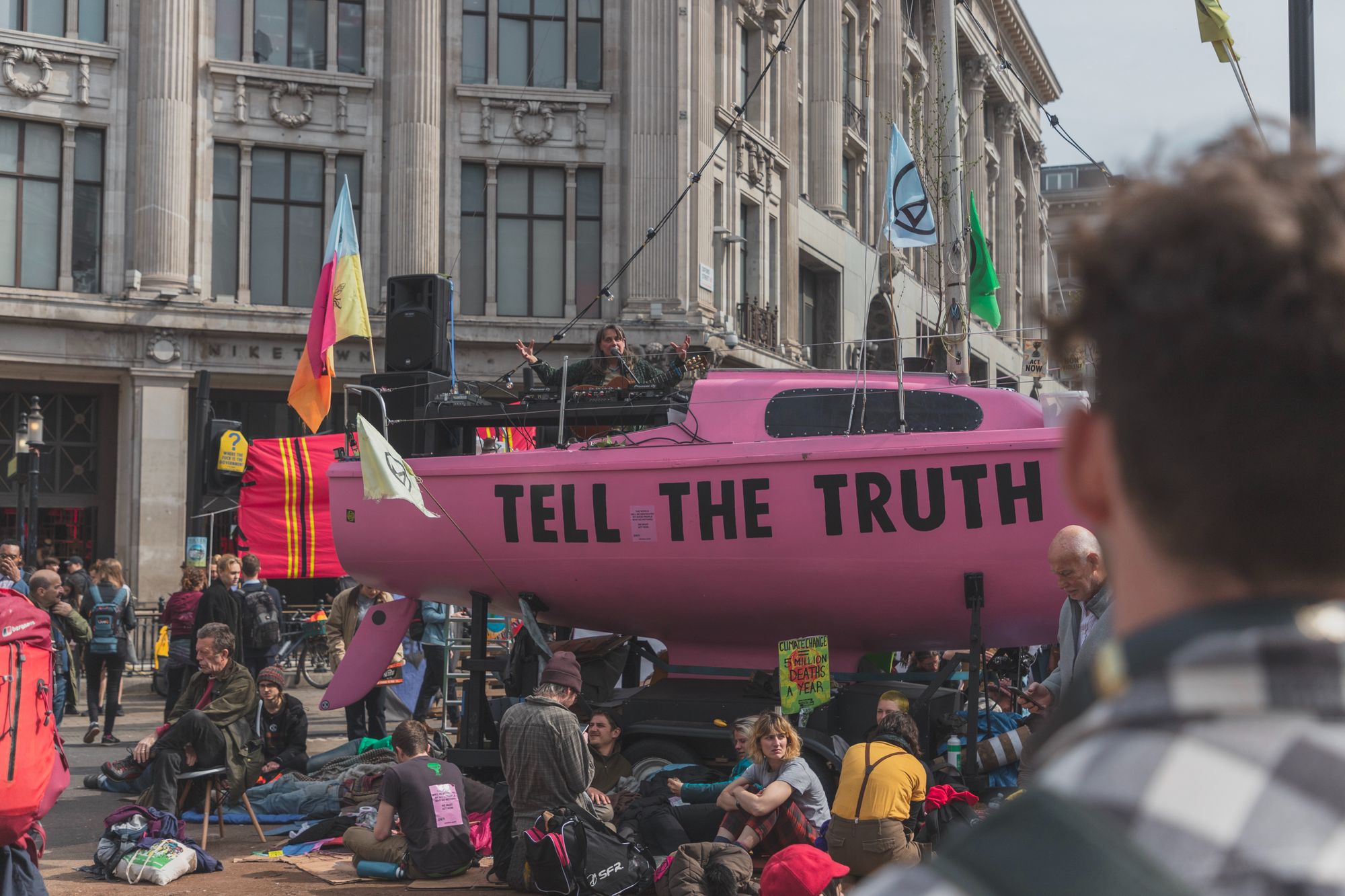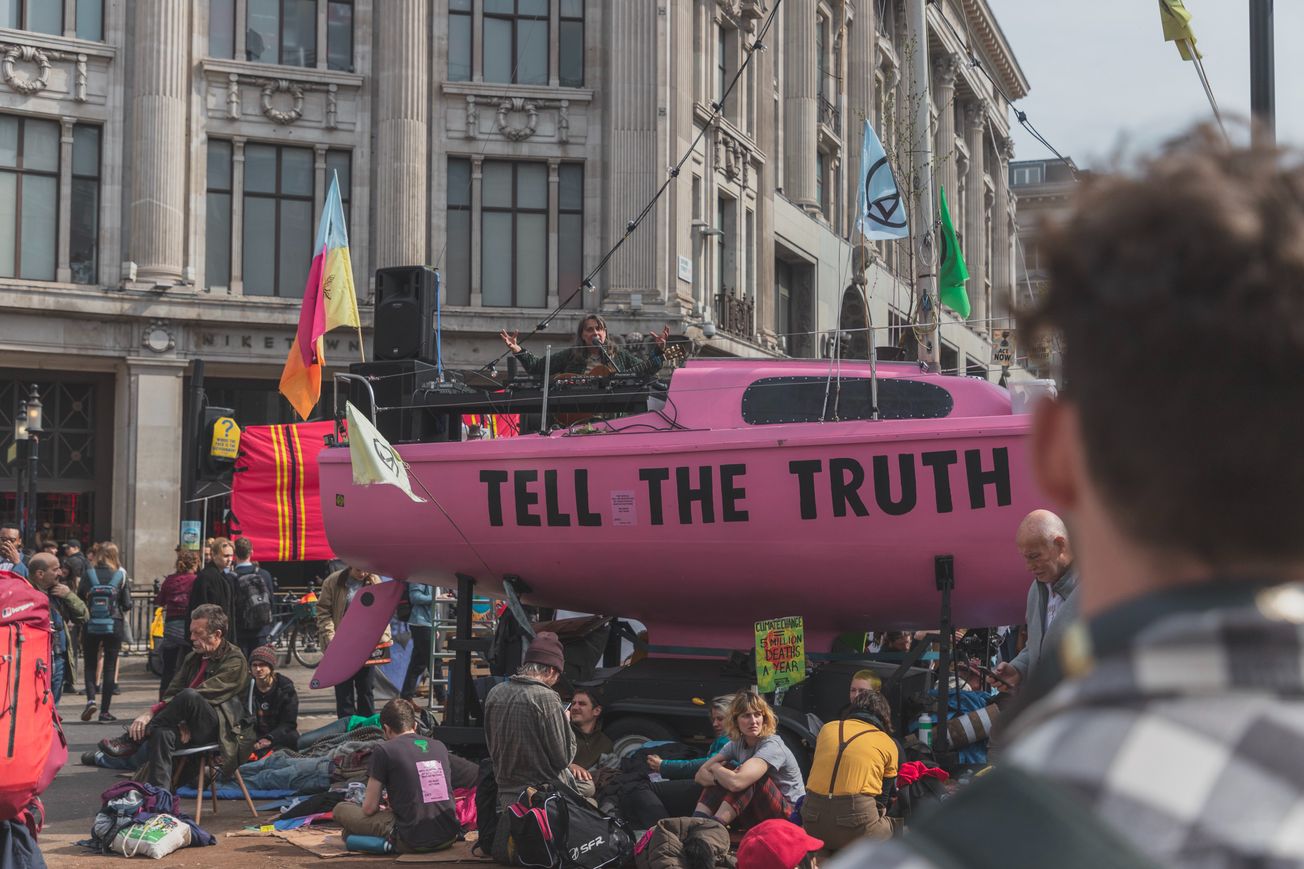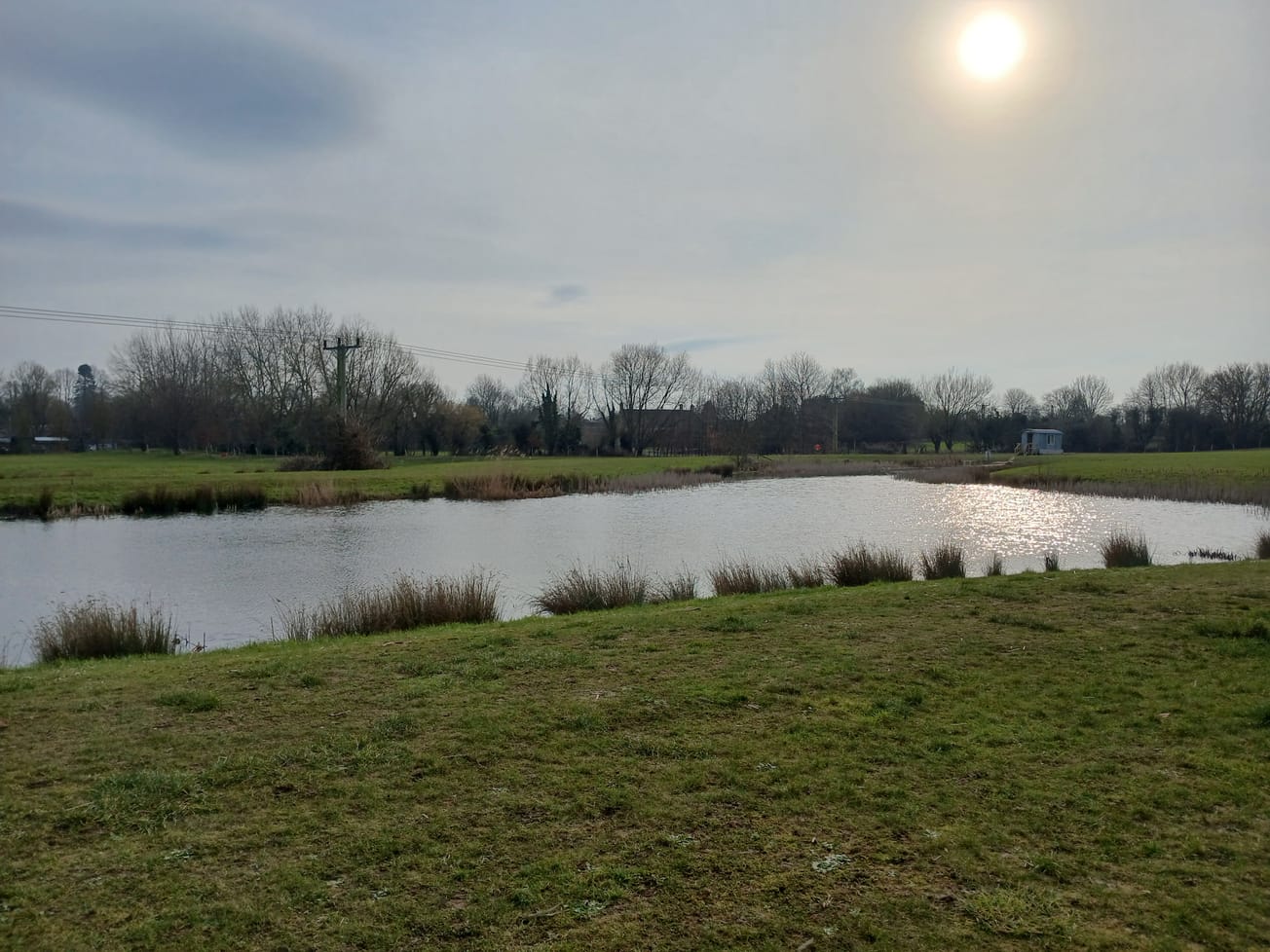By Guy Taylor, second year, History
The protest movement Extinction Rebellion has been the driving force behind recent climate demonstrations in Bristol, but what are their aims and what have they achieved so far?
An analysis of the Extinction Rebellion manifesto shows it to be more than just a ramshackle protest movement; it contains a range of detailed policy recommendations for the future.
Their proposal of a ‘Citizens Assembly’, for example, where a randomly selected body of citizens would make recommendations on climate change policy to parliament, is just one of many political changes the movement is attempting to encourage.

The manifesto also contains some ambitious targets for the government, with the most well-known being a reduction of carbon emissions to net-zero by 2025. That is not to say that the primary function of Extinction Rebellion is to provide suggestions to the government on policy. It is, after all, a ‘rebellion’.
'Increasing publicity and media coverage of issues surrounding climate change has been the most apparent achievement of Extinction Rebellion.'Guy Taylor
In Bristol, the group has aimed to influence the city council and mayor Marvin Rees’s climate policy through civil disobedience and non-violent resistance. This tactic aims to increase public awareness on climate issues, send a message to local politicians and highlight potentially contentious policies in the Bristol area. For example, stopping the expansion of the Bristol airport has been a key target of the recent summer uprisings, and more recently throughout October protests have been held at the airport to bring attention to the issue.
Increasing publicity and media coverage of issues surrounding climate change has been the most apparent achievement of Extinction Rebellion. Whilst it can be debated as to whether this coverage has been generally positive or negative, it has undoubtedly brought attention to the issue of climate change.
"There's a misconception about XR that it's just a bunch of people trying to disrupt."
— Extinction Rebellion Bristol 🛑🏗️ (@XRBristol) November 8, 2019
There's space for everyone in #XR. It's far more than arrests. We need art made, communities grown, science communicated
Everyone can play a part#EverybodyNowhttps://t.co/p4lXz5I2XQ pic.twitter.com/NsIeVwmtie
For instance, four protestors in Bristol received BBC coverage after chaining themselves to a pink bathtub on the M32. All four were tried at Bristol Magistrates Court and found guilty of obstructing a highway. Furthermore, interviews were held with protestors in Bristol during the Summer uprisings on the BBC daily politics program.
This kind of media coverage putting Extinction Rebellion in the limelight certainly has the potential to influence politicians in policy-making.

Marvin Rees, the current mayor of Bristol, has directly stated the influence of Extinction Rebellion, writing in the Bristol post that ‘Extinction Rebellion have played an important role by putting climate change high up on the political agenda. I will be one of many city leaders who welcome this.’
Since this comment, Rees has announced £50,000 of funding for councillors on climate issues and has set up an advisory committee on climate change to advise the city boards. Furthermore, early attempts have been made to implement ideas similar to a citizen’s assembly, with a people’s assembly being held with members of Avon and Somerset Police in September. However, it is worth noting that Bristol airport is still due to be expanded.
Overall, there is a clear surge of momentum behind the protestors, but it remains to be seen what influence they will have on climate policy in the long term.
Featured image: Joël de Vriend / Unsplash
What do you think of Extinction Rebellion's combination of peaceful and disruptive protests? Is it effective? Let us know!









